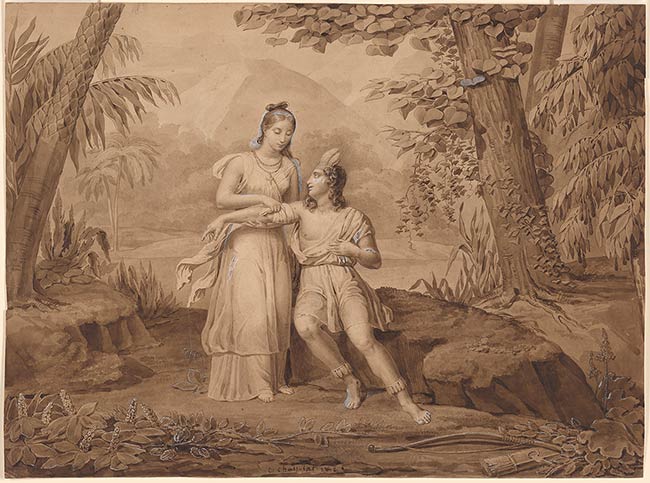

The Morgan preserves two (1988.12:1-2) of Chasselat's original designs for illustrations to the 1812 edition of François-René de Chateaubriand's (1768-1848) novel Atala (1801). The tale features a half-European, half-indigenous American woman, Atala, who, despite a vow of chastity made to her mother, falls in love with Chactas, a member of the Natchez tribe in the Mississippi delta. After freeing Chactas from captivity, Atala, realizing the impossibility of her situation, commits suicide. This scene depicts Atala tending to Chactas's wound after they escape his captors, G. Duthé engraved Chasselat's designs, which became familiar representations of the forbidden romance set in America. The illustrations hint at the problematic nature of Chateaubriand's melodrama. Inspired by his travels in America and sympathetic to the mistreatment of indigenous Americans, the author chose to set his tale among the tribes active in the Mississippi region where the French had been present since the eighteenth century as various expeditions and colonies sought to exploit the natural resources of the territory relying on enslaved labor. The novel also gives a pivotal role to Father Aubry, a missionary who carries the message of Christianity to Atala and Chactas and aids them at a strategic moment in the plot. While enormously popular in its day, the novel represents the particular French romantic perspective on the indigenous experience and the expansion of European values in North America.
Signed and dated in brown ink, at lower center, "C. Chasselat 1812".
Goldschmidt, Lucien, 1912-2002, former owner.
Humann, Christian, 1929-1981, former owner.
